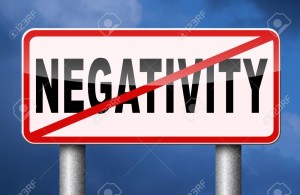
no pessimism or negativity think positive stop negative thinking having pessimistic thoughts be positive and optimistic thinking makes you happy
Negativity, my fourth keyword from Questions of Poetics, is a rich term whose usage far outstrips its dictionary definitions or thesaurus synonyms. Searching for an image for this post, I encountered a raft of popular maxims on the disadvantages of negativity, on how negative thoughts, feelings, actions only hinder us in the quest for happiness, becoming a detriment to any sort of sociality or belonging. The first results for a Google Advanced Image search for negativity reveals: an image of a glass half full or half empty; “7 Signs That Someone’s Negativity Is Toxic“; a “no negativity” logo; a cartoon image of a fighting couple; “Don’t let anyone’s ignorance, hate, drama or negativity stop you from being the best person you can be”; “Good things happen when you distance yourself from negativity and those who create it”; a personal training manual for “Beating Negativity“; a cartoon image of three happy-faced “blocks” outweighed by a black, negative “block”; “5 Ways You Are Spreading Negativity Without Knowing It”; “How to Deal with Negativity (6 Mindful Strategies); “Negativity Is a Thief, It Steals Happiness,” and so on. While “the power of positive thinking” is as American as apple pie, this result shows nothing less than a cultural logic that forbids the expression of “negative” thoughts, emotions, or actions, insofar as they are seen as a threat to “our” forms of positivity. Negativity has become a social threat, a thought crime that may be punishable—a moment of social reinforcement that has everything to do with normalizing our current extreme circumstances. … More











